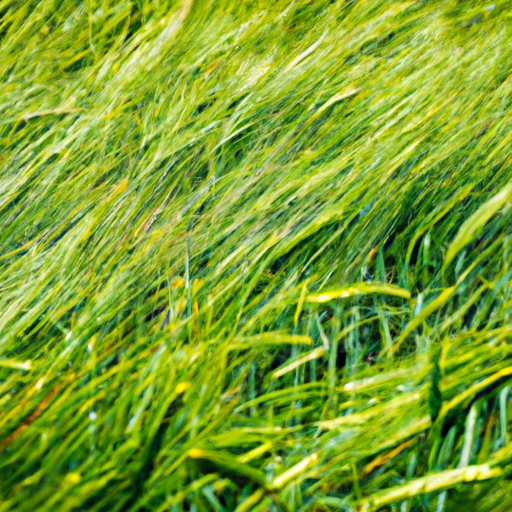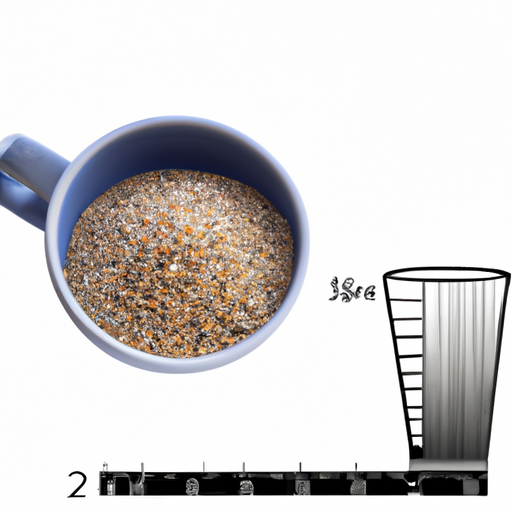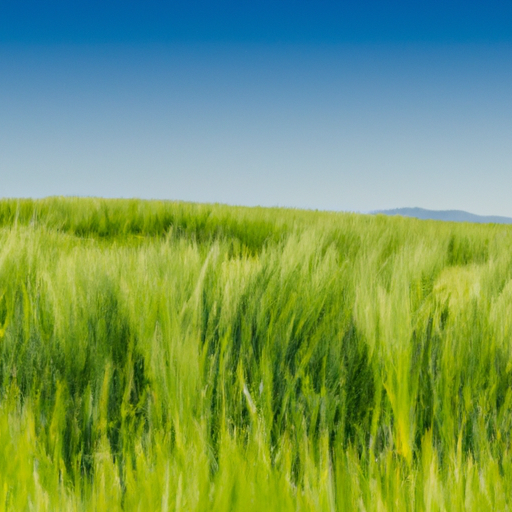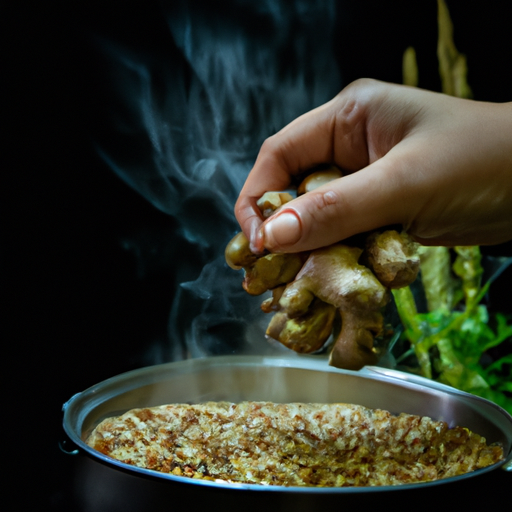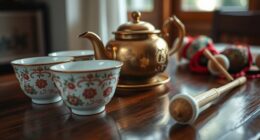I enjoy consuming tea, with barley tea ranking among my preferred varieties. This drink offers a delightful and robust taste, and preparing it in your kitchen is a breeze. For those who haven’t had the pleasure of tasting barley tea yet, you may be curious about its preparation method. Fortunately for you, this guide will take you through the entire procedure in a detailed, step-by-step manner, allowing you to savor a tasty mug of barley tea promptly.
To make barley tea, you’ll need just a few simple ingredients: barley, water, and a tea strainer. Don’t worry if you’re not familiar with barley or where to find it; I’ll provide all the information you need.
Once you have your ingredients, the process is straightforward. All you have to do is boil the water, steep the barley, strain the tea, and serve!
So, let’s get started and learn how to make barley tea together.
Key Takeaways
- Clean barley by rinsing it under running water and toast it in a dry pan over medium heat before brewing.
- Boil water in a pot and add roasted barley to simmer for 15-20 minutes, then steep for 15-20 minutes until it turns golden brown.
- Strain the tea using a fine mesh strainer or cheesecloth, and add tea flavorings such as mint or lemon.
- Enjoy barley tea hot or cold, and pair it with savory dishes. Store the tea properly and consume it within a week of brewing to get maximum benefits, such as lower blood sugar levels, rich antioxidants, and anti-inflammatory properties.
Gather Your Ingredients
You’re gonna need some barley, water, and a tea strainer to make this delicious barley tea. There are different types of barley that you can use for tea, such as hulled barley or pearl barley. You can easily find them at your local grocery store or online. Barley tea benefits include soothing digestive issues, reducing inflammation, and promoting better sleep.
Once you’ve gathered your ingredients, it’s time to prep your barley. Start by rinsing the barley under running water to remove any dust or debris. Then, toast the barley in a dry pan over medium heat for a few minutes until it becomes fragrant. This step is optional, but toasting the barley will enhance its flavor and aroma.
Now that your barley is prepped, you’re ready to brew some delicious barley tea.
Prepping Your Barley
Before I can start making my barley tea, I need to prep my barley. The first step is cleaning the barley to remove any debris or impurities.
Then, I’ll roast the barley to enhance its nutty flavor and aroma. This will ensure that my barley tea has a rich and robust taste.
Cleaning the Barley
First, rinse the barley in cold water until the water runs clear, removing any impurities, dirt, or debris that may have accumulated during storage. It’s important to clean the barley thoroughly to ensure that the tea doesn’t have a bitter taste.
After rinsing, soak the barley in cold water for at least 30 minutes. This will help to soften the grains and make them easier to roast. Once the barley has been soaked, it’s time to move on to the next step of making barley tea: roasting.
To bring out the nutty flavor of the barley, it needs to be roasted in a dry pan until it turns a light brown color.
Roasting the Barley
Now it’s time to really bring out the flavor of the barley by roasting it in a dry pan. Roasting techniques vary, but I prefer to use a medium heat and stir frequently to prevent burning. As the barley roasts, it will start to turn a deep brown color and emit a nutty aroma that’s hard to resist. Be sure to keep a close eye on it, as it can quickly go from perfectly roasted to burnt and bitter.
Not only does roasting the barley enhance its flavor, but it also has a number of health benefits. Roasting helps to break down the starches in the barley, making it easier for your body to digest. It also releases antioxidants and other compounds that can help to reduce inflammation and lower your risk of chronic diseases.
Now that our barley is perfectly roasted, it’s time to move onto the next step of boiling the water.
Boiling the Water
Simply fill a pot with water and bring it to a boil on your stovetop to start making barley tea. It’s important to use the right type of water to ensure a great tasting tea. Distilled water is the best option as it doesn’t contain any minerals or impurities that can affect the taste. However, if you don’t have distilled water, filtered or spring water can also work well.
Here are some tips for perfecting the boiling process:
- Use a pot with a lid to help the water come to a boil faster and keep the heat in.
- Bring the water to a rolling boil, which means the water should have large bubbles and be moving quickly.
- Don’t add the barley until the water is boiling. Adding it too soon can result in a weaker flavor.
Different types of water can also affect the taste of your barley tea. For example, tap water can contain minerals that affect the taste and color of the tea. It’s best to avoid using tap water if possible.
Once the water is boiling, you can add in the roasted barley and let it simmer for about 15-20 minutes. This will allow the flavor to infuse into the water.
Next, we’ll move onto the next step of steeping the barley to create the perfect cup of barley tea.
Steeping the Barley
To get the perfect steep, let the barley simmer for around 15-20 minutes, until it turns a rich golden brown and the aroma fills your kitchen, making you feel like you’re back in your grandmother’s cozy kitchen. The key to achieving the perfect color and flavor is in the roasting techniques used. Some people prefer to roast their barley in the oven before steeping, while others prefer to roast it in a pan on the stove. Whichever method you choose, be sure to watch it carefully to prevent burning.
As the barley steeps, you may start to notice subtle variations in flavor. Some people prefer a nuttier flavor, while others enjoy a more earthy taste. These variations are a result of the type of barley used, as well as the roasting technique. If you’re unsure which type of barley to use, it’s best to experiment with a few different varieties until you find your preferred taste.
Once the barley is finished steeping, it’s time to strain the tea. But before we get into that, let’s take a look at the benefits of barley tea and why it’s worth the effort to make it at home.
Straining the Tea
As you strain the steeped barley, you’ll be able to fully appreciate the rich aroma and subtle variations in flavor that you’ve worked so hard to achieve. Straining the tea is an important step as it removes any loose barley grains or sediment, leaving you with a clear and refreshing drink.
Here’s what you need to know about straining barley tea:
- Use a fine mesh strainer or cheesecloth to remove any small particles from the tea.
- Be sure to press down on the barley to extract as much liquid as possible.
- If desired, add tea flavorings such as mint or lemon to enhance the flavor of the drink.
- Barley tea is known for its many health benefits, including aiding in digestion and promoting healthy skin.
- Enjoy your freshly strained barley tea hot or cold, depending on your preference.
Now that your tea is strained, it’s time to move on to serving it. Whether you prefer to enjoy it hot or cold, there are various ways to serve barley tea that will complement its unique flavor.
Serving the Tea
After straining the barley tea, it’s time to serve it. In Korea and Japan, there are specific tea etiquette rules that are followed when serving tea. For instance, in Korea, it is customary to serve tea to the eldest person first. In Japan, it is polite to pour tea for others before pouring for oneself. These customs show respect and consideration for others.
When serving barley tea, it’s important to keep in mind the flavor profile. Barley tea has a nutty, slightly bitter taste, which makes it an ideal pairing for savory dishes. It’s a refreshing drink that can help cut through the richness of fatty foods. In Korea, barley tea is often served with Korean BBQ, while in Japan, it’s paired with sushi or sashimi.
Here is a table that lists some pairing suggestions for barley tea:
| Dish | Pairing Suggestion |
|---|---|
| Korean BBQ | Barley Tea |
| Sushi | Barley Tea |
| Sashimi | Barley Tea |
| Grilled Meats | Barley Tea |
| Fried Foods | Barley Tea |
Next, we’ll talk about how to store barley tea to ensure it stays fresh and flavorful.
Storing Barley Tea
Storing barley tea properly is crucial if you want to enjoy its full flavor and health benefits. Proper storage starts by ensuring that the tea is completely cooled before you store it. Once the tea has cooled down, transfer it into an airtight container. This will help protect the tea from moisture and air, which can make the tea go stale and lose its flavor.
Another important factor to consider when storing barley tea is the temperature. It’s best to store the tea in a cool, dark place, away from direct sunlight and heat. Exposure to heat and sunlight can cause the tea to oxidize, which can affect its taste and health benefits.
It’s also important to note that barley tea has a relatively short shelf life, so it’s best to consume it within a week of brewing.
Proper storage can help you enjoy the full health benefits of barley tea. Barley tea is rich in antioxidants and has anti-inflammatory properties that can improve your overall health. In addition, drinking barley tea can help lower your blood sugar levels, reduce cholesterol, and boost your immune system.
By properly storing barley tea, you can ensure that you’re getting the most out of this healthy beverage.
Other uses for barley include using it as a grain in cooking or adding it to soups and stews for added nutrition and flavor.
Other Uses for Barley
Now that we know how to properly store barley tea, let’s explore some other uses for barley. As someone who loves experimenting with different ingredients in the kitchen, I was excited to discover the versatility of barley.
Not only is it a staple in many cuisines around the world, but it also offers numerous health benefits. One of my favorite ways to use barley is in soups and stews. Its nutty flavor and chewy texture add a depth of flavor and heartiness to any dish.
I love making a hearty vegetable soup with barley, loaded with carrots, celery, and onions. It’s a perfect meal for a chilly evening, and the barley adds a satisfying element that will keep you feeling full and satisfied. In addition to its delicious taste, barley is also packed with nutrients.
It’s high in fiber, which is great for digestion, and it’s also a good source of protein. Barley has been shown to help lower cholesterol and reduce the risk of heart disease. With all of these health benefits and delicious barley recipes to try, I’m looking forward to incorporating more barley into my cooking.
Frequently Asked Questions
How long does barley tea last in the fridge?
When it comes to storing barley tea, it’s important to keep a few things in mind in terms of shelf life.
Typically, if stored in an airtight container in the refrigerator, barley tea can last anywhere from 3-5 days.
However, it’s important to note that the quality and taste of the tea may begin to deteriorate after the first day or two.
To ensure the best flavor and freshness, it’s recommended to consume the tea within the first day or two after brewing.
Additionally, it’s important to properly clean and sanitize the container before storing the tea to prevent any bacterial growth.
Overall, while barley tea can be stored in the fridge for a few days, it’s best to consume it as soon as possible for the best taste and quality.
Can I reuse the barley for a second batch of tea?
Yes, you can reuse the barley for a second batch of tea. After making the first batch, strain the barley and let it cool down before storing it in the fridge.
When you’re ready to make the second batch, simply add fresh water to the barley and repeat the brewing process. Keep in mind that the flavor may not be as strong as the first batch, but it’s still a great way to reduce waste and get the most out of your barley.
Just be sure to only reuse the barley for a maximum of two batches before discarding it.
Is it safe to drink barley tea during pregnancy?
As someone who’s currently pregnant, I’ve researched the safety of drinking barley tea during pregnancy and breastfeeding. While barley tea has benefits for postpartum recovery, it’s important to be cautious when consuming it while breastfeeding. Barley has gluten that can be hard for some babies to digest and can cause an allergic reaction in rare cases. It’s best to consult a healthcare provider before drinking barley tea while breastfeeding.
However, for postpartum recovery, barley tea can be a great option. It’s rich in antioxidants, can help with digestion, and can even aid in milk production. Overall, it’s important to prioritize your health and your baby’s health when deciding whether or not to consume barley tea.
Can I add sweeteners or flavorings to barley tea?
When it comes to barley tea, there are many variations you can make to suit your taste preferences.
One of the easiest ways to add flavor is by adding sweeteners like honey or sugar.
Some people also like to add herbs like mint or lemon to give the tea a refreshing twist.
Ultimately, the type of sweetener or flavoring you add will depend on your personal preference.
However, don’t go overboard with the sweeteners as it can take away from the natural taste of the tea.
It’s always a good idea to experiment with different tea variations to find the perfect blend for you.
What are the health benefits of drinking barley tea?
When it comes to the health benefits of drinking barley tea, there are quite a few. For starters, it’s a great way to stay hydrated, which is important for maintaining healthy skin, flushing out toxins, and aiding digestion.
Barley tea contains antioxidants that can help protect against cell damage and lower the risk of chronic diseases such as cancer and heart disease. It may also help regulate blood sugar levels and improve cholesterol levels.
As for recipes, there are many ways to make barley tea, but a simple method involves boiling barley grains in water and then letting it steep for several minutes before straining and serving. To add some flavor, you can add honey, lemon, or other natural sweeteners.
Conclusion
In conclusion, making barley tea is a simple and enjoyable process that can bring a sense of comfort and warmth to your day. As I’m savoring my cup of freshly brewed barley tea, I’m reminded of the importance of taking a moment to slow down and appreciate the little things in life.
Symbolically, the process of making barley tea is like tending to a garden. Just as we carefully plant and nurture our crops, we must also take care in selecting and preparing our ingredients for the perfect cup of tea.
And, just as we must tend to our gardens with patience and diligence, we must also give our tea the time and attention it needs to steep and develop its full flavor.
So, take a moment to tend to your own little garden and enjoy the soothing taste of homemade barley tea.



